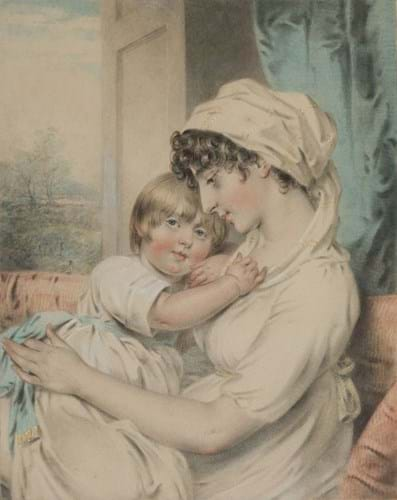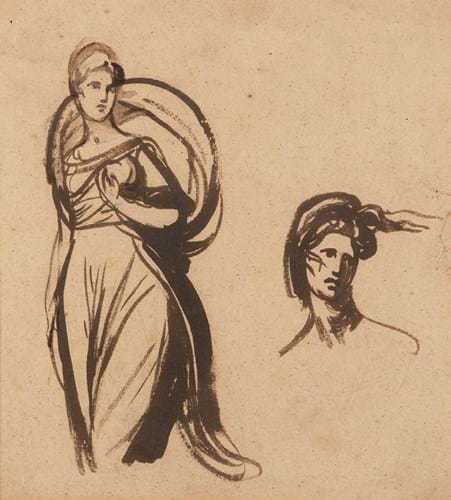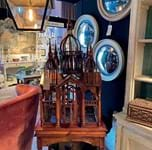
John Downman’s portrait of Mrs Townely and her son, 1812, coloured chalks, watercolour, £5000 at Guy Peppiatt's exhibition.
Downman developed a knack for quick, often oval-shaped portraits of society sitters in fashionable dress, sketching them in black chalk and pencil on one side of a sheet and adding colour to the other side before attaching it to a stronger piece of paper. His distinctive technique was popular for being both quick (his method required one sitting as opposed to an oil painter’s usual three) and, at around 2-3 guineas per portrait, affordable.
Romney, one of the most celebrated British portraitists of the late 18th century, produced carefully worked oil paintings, but these contrast with his swift, and vigorous drawings. Unlike Downman’s, these were never meant to be sold, though both are now offered together at Peppiatt’s St James’s gallery.

George Romney, studies for Viscountess Bulkeley as Hebe, brown wash over pencil on laid paper, £12,500 at Guy Peppiatt's exhibition.
The dealer argues that there are powerful similarities between the two artists: both saw themselves as outsiders in the London art scene, Romney arriving from a less privileged home in Lancashire only a few years before the wealthier Downman came from Wales.
Both struggled to find success initially and had contentious relationships with the fledgling Royal Academy. By the 1780s the pair were two of the most successful portraitists in London, despite rarely meeting.
Peppiatt offers 30 works in the show from April 25-May 6.














